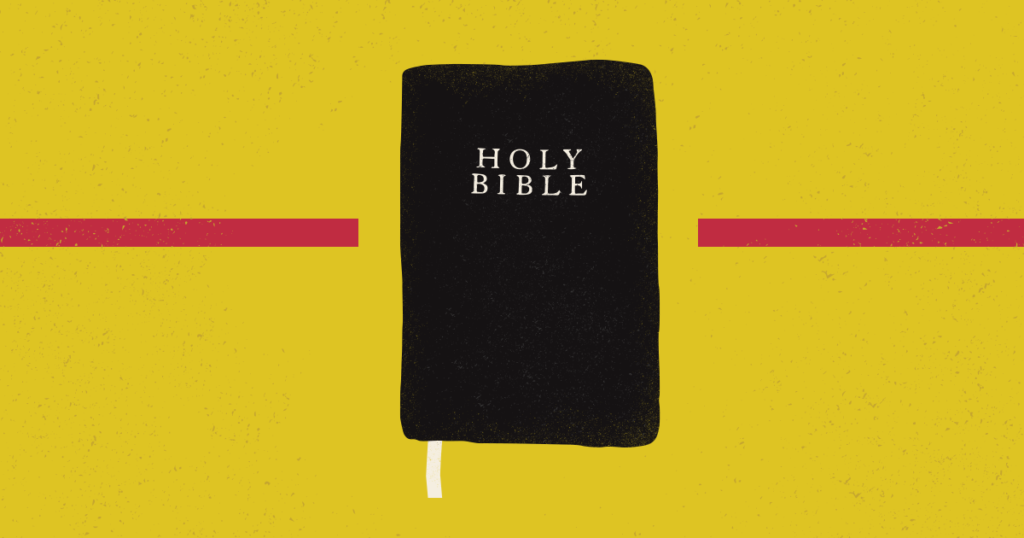by Korey D. Maas
Given the centrality of the Law-Gospel distinction in Lutheran theology, it seems an unlikely candidate for inclusion among Scripture’s “difficult” teachings. Indeed, C.F.W. Walther, the Lutheran theologian who (literally) wrote the book on the subject, could bluntly say, “In fact, it is easy — easy enough for children to learn.”[1] Strangely enough, however, Walther makes that statement almost immediately after asserting, “To rightly distinguish Law and Gospel is the most difficult and highest Christian art.”[2]
So which is it, an easy teaching or a difficult one? And what accounts for such apparently contradictory estimates? Before attempting to answer, a brief refresher on these biblical terms is warranted.
Defining and Distinguishing
The fundamental content of the Law is summarized by Jesus in the commands to “love the Lord your God with all your heart and with all your soul and with all your mind,” and to “love your neighbor as yourself” (Matt. 22:37–40). Because these divine commands are imperfectly kept, St. Paul emphasizes that “through the law comes knowledge of sin” (Rom. 3:20), and so of God’s wrath (Rom. 4:15).
The content of the Gospel, by contrast, is comprised not of commands or threats, but of promises. Namely, that “God so loved the world, that he gave his only Son, that whoever believes in him should not perish but have eternal life” (John 3:16). Its purpose and effect, therefore, is not the revelation of sin and wrath, but “salvation to everyone who believes” (Rom. 1:16).
In view of Scripture, the Lutheran Confessions simply define the Law as “God’s unchangeable will” (FC Ep VI 7), which “rebukes everything that is sin and contrary to God’s will” (FC Ep V 3). The Gospel, on the other hand, “is properly the promise of forgiveness of sins and of justification for Christ’s sake” (Ap IV 43). Thus Philip Melanchthon could summarize, in what was arguably the first textbook of Lutheran theology: “The law indicates disease, the gospel points out the remedy.”[3]
Easy or Difficult?
In this light, the Law-Gospel distinction really does seem “easy —easy enough for children to learn.” In fact, chances are that you did learn it as a child, with the pithy “S.O.S.” acronym: the Law Shows Our Sin, while the Gospel Shows Our Salvation. Why, then, does Walther also call it the “most difficult” art? He clarifies by explaining that the difficulties arise especially in “the application and the use of this doctrine.”[4]
Consider St. Paul’s insistence that “the law is holy, and the commandment is holy and righteous and good” (Rom. 7:12). Being the revelation of God’s own will, of course it is. But note also Paul’s more qualified statement: “The law is good, if one uses it lawfully” (1 Tim. 1:8 emphasis added). Though he is by no means suggesting that the Law could ever be bad in itself, Paul clearly understands that it can be improperly used or applied — as can the Gospel. Thus he encourages Timothy in the supreme importance of “rightly handling the word of truth” (2 Tim. 2:15).
Application and Use
As a concise guideline for rightly handling God’s Word, Walther notes that one is to “preach the Law to ‘secure’ sinners, yet preach the Gospel to alarmed sinners.”[5] By way of illustration, compare the following biblical episodes. When the Philippian jailer asked Paul and Silas, “What must I do to be saved?” they replied with the Gospel promise: “Believe in the Lord Jesus, and you will be saved” (Acts 16:25–34). Yet when a young man asked Jesus a similar question, he was told, “Keep the commandments.” When the young man insisted he had already done so, Jesus issued a further command: “Sell what you possess and give to the poor” (Matt. 19:16–22).
It would be a grave mistake to read these passages as proposing two different ways to obtain salvation. Instead, they reveal keen pastoral discernment. The young man’s mistaken belief that he had fulfilled the Law revealed him to be a secure sinner. Not recognizing his sinfulness, he was unprepared to receive the good news of sin’s forgiveness; the Law was yet necessary so that he might first “become conscious of sin.” The fearful trembling of the Philippian jailer, on the other hand, revealed him to be an alarmed sinner in need of the Gospel.
Use and Effect
If the most obvious difficulty in “rightly handling the word of truth” is determining whether a particular person in a particular moment needs to hear Law or Gospel, a more subtle difficulty arises from the fact that one’s intended use of the Law does not necessarily determine its actual effect on the hearer.
Though the Confessions acknowledge that the Law’s “chief” function is to reveal sin (SA III II 4), they recognize that it also functions as a curb to restrain sin and as a guide to direct the regenerate in holy living (FC Ep VI 1). While such distinctions are true and helpful, we often err in thinking we can proclaim the Law in such a way that it serves only one of those functions. The teacher explaining the Fourth Commandment to a Sunday school class, for example, might primarily intend his instruction to guide the future behavior of his students. Its immediate effect on the student who disobeyed or disrespected his parents that very morning, however, will very likely be accusatory. Indeed, as the Confessions declare, though the Law does not only accuse, it at least “always accuses” (Ap IV 38).
What About Me?
This, then, highlights a final difficulty. However hard it might be to rightly discern the proper uses of Law and Gospel when proclaimed to others, the greatest difficulty perhaps lies in applying each to ourselves. Martin Luther did not hesitate to cite himself as an example. “Because I’ve been writing so much and so long about it, you’d think I’d know the distinction, but when a crisis comes I recognize very well that I am far, far from understanding” (LW 54:127).
This problem is compounded, Luther elsewhere notes, because “the devil and Christ both use the law to terrify, but their goals are very different” (WA 39/1:426-427). Christ would have us experience the Law’s terror to turn us to repentance and the promise of the Gospel, while Satan desires that it lead us to despair of salvation. For this reason, the Confessions urge Christians to “guard this distinction” between Law and Gospel “with special care”; only “by the Gospel they can support themselves in their most difficult trials against the Law’s terrors” (FC SD V 1).
The proper use of Law and Gospel surely is, as Walther understood, “the most difficult and highest Christian art,” one “taught only by the Holy Spirit in combination with experience.” For this reason the Christian will not cease to pray for the discerning wisdom imparted by the Spirit, that God’s Word might ever be handled rightly. At the same time, the Christian will also give continual thanks to God that both Law and Gospel are indeed His Word, and that even when our own judgments occasionally and inevitably fail, His Word will not return to Him empty, but will accomplish that for which He sent it (Isaiah 55:11).
[1] C.F.W. Walther, Law & Gospel: How to Read and Apply the Bible (St. Louis: Concordia, 2010), 49.
[2] Walther, 49.
[3] Philip Melanchthon, Loci Communes (1521), in Melanchthon and Bucer, ed. Wilhelm Pauck (Philadelphia: Westminster Press, 1969), 71.
[4] Walther, 49.
[5] Walther, 21.

This article originally appeared in the October 2023 issue of The Lutheran Witness.





After being led to believe that the Law alone is the tool that should be deployed to terrify “secure sinners” and drive them to repentance, I read that “God’s kindness is meant to lead you to repentance” (Romans 2:4). And now I am inclined to believe that some people are neither secure nor insecure in their sins but, in a word, feral — fearful, hostile, wayward, diseased, abused, dissatisfied with life, grabbing what they can get, and unaware of even the possibility of new life trusting in what Christ has done and taught.
With divine compassion, the Son of Man came to seek and to save the feral. Imagine a shepherd going out and loudly scolding and threatening a bunch of a wayward sheep who have never seen him before. Will that induce them to repent, turn and follow him?
To repent is to turn away from what is evil and toward what is good. Like being unable to turn toward light that you have not yet seen, you cannot turn toward what is good unless you first become aware of it. And what makes you aware of it is the Good News that this goodness is being offered to you. So repentance is a response to both Law and Gospel.
I wish this type of expository teaching was more frequently addressed in sermons at church. In my humble opinion, we must always go back to God’ grace, remembering that even saved people remain sinners in need of grace throughout their entire lives. This takes away a level of complacency, which is good, and disallows us from being too comfortable in our spiritual walk. As the Lord told Cain, “sin lies at the door.” Understanding the Lutheran view of ‘Law and Gospel,” give two counterpoints which characterize our faith. The Law convicts, and without it one can fall into the trap of regarding ‘cheap grace’ in our broken, unsanctified state. Frequent confession and repentance, confidence in Christ, awareness of our sinful propensity, should guide the believer to remain humble before God. Spiritual warfare remains unabated until we are joined to Our Lord in glory. Soli Deo Gloria